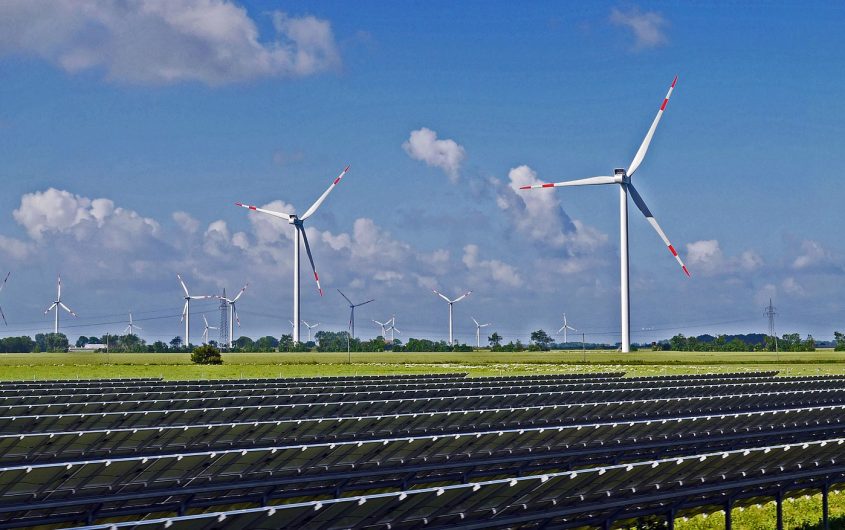
International Energy Policy at a Crossroads?

Isabella Mekker
Research Intern
Isabella Mekker was a research intern at AICGS for the spring of 2019. She writes articles for the AICGS website, conducts research for current projects and resident fellows, manages databases, operates the front desk, and helps to organize and document events.
Ms. Mekker is currently pursuing a Master’s degree in International Affairs at George Washington University’s Elliott School of International Affairs, with a focus on International Security and Global Gender Policy. Her current research interests focus on security and development policy, the European Union, and the role of China in the future of international affairs.
Prior to pursuing her Master’s degree, Isabella received a Bachelor’s degree in Political Science from Clark University. Isabella has spent time living in Beijing, China, where she was a student for four years and an intern at a healthcare nonprofit for several months. She has also lived and studied German in both Vienna and Munich.
The Transatlantic Partners and the Future of Energy
Energy policy is an area of international relations that has the potential to increase cooperation or spark conflict. When President Donald Trump took office in 2017, the dialogue surrounding energy policy shifted away from multilateral cooperation for transitions to clean energy and toward increasing competition and production of fossil fuels. On the other side of the Atlantic, Germany has remained devoted to building its goals for the Energiewende. As U.S. and German strategies are on diverging paths, the question becomes whether there is any room for future cooperation. On May 7, 2019, DAAD/AGI Research Fellow Sonja Thielges discussed her research on the foreign policy implications of energy policy for transatlantic relations.
Energy Strategies/Policies in Germany and the United States
Germany: Energiewende
- Germany is highly dependent on fossil fuels: 80% of its energy mix is oil, gas, or coal.
- Russia is the main supplier for all of these fossil fuels; however, Norway, the UK, Australia, Colombia, and the Netherlands also export to Germany.
- Coal has the highest percentage in this mix, at 35.4%, but renewable energy almost matches this proportion at 35%.
- The German strategy is called the Energiewende, which implies the transition to renewable and sustainable energy with defined targets in both the near and far future:
- By 2025, make renewable energy 40-45% of the energy mix
- By 2050, reduce demand of primary energy by 50%
- By 2030, reduce greenhouse gas emissions by 55% below 1990 levels
- By 2050, reduce greenhouse gas emissions by 80% below 1990 levels
- By 2022, have a nuclear phase-out
- By 2038, have a coal phase-out
- By 2050, make the share of fossil fuels in the energy mix below 20%
United States: Energy Dominance
- The United States is also highly dependent on fossil fuels, with the same total fossil fuel proportion as Germany at 80%.
- The United States, however, is one of the world’s top producers of oil, gas, and goal, exporting coal to 63 different countries and gas to 30 countries.
- The U.S. has an import dependence for oil but has been a net gas exporter since 2017.
- Coal makes up 27.4% of the energy mix similar to Germany, however, natural gas is at 35.1%, making it the highest proportion in the energy mix.
- The proportion of renewables is only 17.1%, and the United States has no climate or renewable energy targets.
- The United States announced its withdrawal from the Paris Climate Accords.
- Policy focuses on eliminating regulatory barriers to fossil fuel production and loosening fuel-economy standards
- The main goal is raising the production of oil, coal, and gas by exploring new federal lands for production.
Germany and the United States have diverging interests with regard to energy policy.
Energiewende vs. Energy Dominance: Competition and Conflict
- Germany’s vision for the future of global energy is to create both a domestic and international movement toward sustainable energy.
- Goal is to increase energy security, which is defined as energy that is reliable, economically viable, and environmentally sustainable.
- The United States’ goal for the future of energy is to maintain U.S. power, influence, and leadership in the international system through increased production of oil, natural gas, and coal.
- Goal is to increase energy security through U.S. dominance and leadership in the energy market.
- The fundamental differences in energy foreign policy goals are that the United States does not explicitly state goals for the environment, and the underlying norms in each country:
- In Germany it is commonly accepted that there should be a transition to renewable energy, whereas in the U.S., the underlying norms for energy policy are the commercial value system and free enterprise.
- In addition, while both Germany and the United States have a foreign policy goal of “energy security,” they define this differently.
- Conflict has arisen with regard to international cooperation, as the United States has refused to cooperate on a number of issues related to combatting climate change and transitioning to renewable energy.
- Germany and the United States have also competed in bilateral cooperation; for example, with the United Arab Emirates, Germany has focused on energy efficiency and the U.S. has worked on fossil fuels.
Shared Interests and Areas for Cooperation
Subnational Cooperation
- While at the national level there might be lack of similarity, German energy policy and subnational policies in the United States align.
- There are already existing partnerships between the German federal government and the state governments of California and New York.
- There are also coalitions of states, cities, businesses, and universities, which actually has an impact on local-level policy.
Development Assistance
- Although U.S. policy is not aligned with the Sustainable Development Goals or the Paris Climate Agreement, there is an overlap between the United States and Germany with regard to international development project goals.
- Both the U.S. and Germany seek to engage in development projects for increasing energy access in developing countries.
- There is also room to cooperate in this field with the common interest of maintaining competitiveness with Russia and China, to maintain relationships with developing countries that Russia and China also seek to work with.
- This cooperation can be achieved, for example, through USAID, DFC, and German ministries for clean energy, as they focus on building local capacities for sustainable energy.
Clean-tech Innovation Cooperation
- The United States and Germany both have a shared interest to advance clean technology and increase innovation through government programs and grants.
- Public-private partnerships and joint research centers provide avenues for cooperation to increase innovation for clean technology.
- Some specific areas that both the U.S. and Germany have sought to increase investment in are e-mobility, batteries, and building efficiency.









